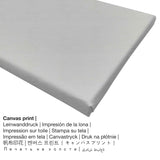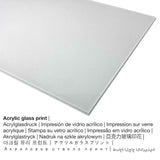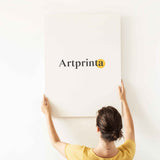John Singer Sargent, 1890 - Portrait of Mrs. Edward L. Davis and Her Son, Livingston - fine art print
Tax included. Shipping calculated at checkout.
Artwork description from the museum's website (© - by Los Angeles County Museum of Art - Los Angeles County Museum of Art)
In December 1889 Sargent returned to the United States, and, owing to his international fame, he was immediately deluged with requests for portraits by the best of New York and Boston society. Sargent spent the month of June 1890 in Worcester, Massachusetts, fulfilling a commission he had received several months earlier to paint the portrait of Mrs. Edward Livingston Davis. Maria Robbins Davis (1843-1916) came from a distinguished Boston family and, at the time of Sargent’s portrait, was one of Worcester’s most prominent women and the wife of a former mayor. The painting of Mrs. Davis with her son Livingston (1882-1932) was the most commanding and important of the portraits Sargent created in Worcester. Sargent used the Davises’ stable for his studio because of its size and perhaps its empty black interior. In the portrait he avoided any allusions to the location and instead focused on the figures themselves, allowing their character and relationship to dominate. Sargent produced a complex psychological grouping in which the mother is contrasted with her child. Standing -- in the tradition of the formal, full-length portrait -- Mrs. Davis projects her upper-class breeding by her erect posture and frontal pose, yet she is also shown as a spirited woman and a mother of great warmth. While she and her son do not look at each other, they interact, albeit in a polite manner, through the tender grasp of hands and physical proximity The boy shyly leans toward his mother, and she responds by sheltering him with her left arm. In this and other family portraits Sargent masterfully avoided any sentimentality while sympathetically conveying his subjects’ personalities. Sargent combined a dark palette with strong lighting, so that the overall effect is bright. Following the example of Carolus-Duran on close attention to values and the example of Spanish art, Sargent limited his palette largely to black and white while creating a colorful effect: there are subtle shifts from the cool blue-black of Mrs. Davis’s dress to the warmer brown, black of the background, and touches of light blues in the shadows of the boy’s sailor suit. Mrs. Davis and Her Son Livingston shows off Sargent’s vigorous, fluid brushwork, most notably in the ruffles, fichu, and embroidery of Mrs. Davis’s dress and the shadows of Livingston’s suit. Sargent combined his handling with an assured manipulation of dramatic lighting to firmly model the figures. He created a psychologically penetrating portrait as well as a technical tour-de-force. Sargent’s emulation of Spanish baroque painting is echoed in the faintly Spanish features of the portrait’s original frame, designed by architect Stanford White.
Structured artwork data
| Title of the piece of art: | "Portrait of Mrs. Edward L. Davis and Her Son, Livingston" |
| Categorization of the work of art: | painting |
| General category: | modern art |
| Artwork century: | 19th century |
| Artpiece year: | 1890 |
| Artwork age: | around 130 years |
| Museum: | Los Angeles County Museum of Art |
| Place of the museum: | Los Angeles, California, United States of America |
| Web URL: | Los Angeles County Museum of Art |
| Artwork license type: | public domain |
| Courtesy of: | Los Angeles County Museum of Art (www.lacma.org) |
Artist information table
| Artist: | John Singer Sargent |
| Alias names: | john s. sargent, Sargent, john sargent, sargent john singer, Sargent John S., John Singer Sargent, Sargeant John Singer, J. s. Sargent, Sargent John, J. Singer Sargent, J.S. Sargent, J. Sargent, Sargent John-Singer, sargent j.s., Sargent John Singer, js sargent |
| Gender of the artist: | male |
| Nationality: | American |
| Jobs: | painter |
| Country of origin: | United States |
| Artist category: | modern artist |
| Styles of the artist: | Impressionism |
| Life span: | 69 years |
| Born: | 1856 |
| Hometown: | Florence, Firenze province, Tuscany, Italy |
| Year of death: | 1925 |
| Deceased in (place): | London, Greater London, England, United Kingdom |
The product specs
| Product categorization: | art reproduction |
| Reproduction method: | digital reproduction |
| Production process: | digital printing |
| Manufacturing: | Germany |
| Type of stock: | production on demand |
| Product use: | home décor, gallery wall |
| Alignment of the artwork: | portrait format |
| Side ratio: | (length : width) 9 : 16 |
| Image aspect ratio implication: | the length is 45% shorter than the width |
| Fabric options: | canvas print, metal print (aluminium dibond), poster print (canvas paper), acrylic glass print (with real glass coating) |
| Canvas print (canvas on stretcher frame) options: | 50x90cm - 20x35" |
| Acrylic glass print (with real glass coating): | 50x90cm - 20x35" |
| Poster print (canvas paper) variants: | 50x90cm - 20x35" |
| Aluminium dibond print options: | 50x90cm - 20x35" |
| Picture frame: | without frame |
Order your favorite product material
The product dropdown menu provides you with the chance to choose your prefered size and material. You can choose among the following product customization options:
- Printed poster (canvas material): The poster is a UV printed sheet of flat canvas paper with a slightly roughened structure on the surface. The poster print is excellently suited for framing the art replica using a customized frame. Please note, that depending on the absolute size of the poster print we add a white margin between 2-6cm around the painting, which facilitates the framing with a custom frame.
- Aluminium dibond print (metal): This is a metal print made on aluminium dibond with an outstanding depth. Its non-reflective surface creates a modern look. For the Direct Aluminium Dibond option, we print the work of art on the surface of the aluminum. The colors are vivid and luminous, the details appear very clear.
- Acrylic glass print: The acrylic glass print, which is often named as a UV print on plexiglass, will convert your favorite original into stunning décor and offers a great alternative to canvas and dibond prints. Your own replica of the artwork is being made with modern UV printing machines. The effect of this are intense and sharp color tones. Our real glass coating protects your chosen art replica against sunlight and heat for up to 60 years.
- Canvas print: A canvas direct print is a printed canvas stretched on a wood frame. Hanging a canvas print: The great advantage of canvas prints is that they are relatively low in weight. This means, it is easy and straightforward to hang up the Canvas print without the help of extra wall-mounts. Because of thata canvas print is suited for all kinds of walls.
Which type of art product do we offer?
This artwork titled Portrait of Mrs. Edward L. Davis and Her Son, Livingston was painted by the painter John Singer Sargent in 1890. Nowadays, this piece of art belongs to the Los Angeles County Museum of Art's art collection, which is the largest art museum in the western United States, with a collection of more than 142.000 objects that illuminate 6.000 years of artistic expression across the globe. We are happy to mention that the public domain piece of art is being provided with courtesy of Los Angeles County Museum of Art (www.lacma.org).Creditline of the artwork: . The alignment of the digital reproduction is portrait and has a side ratio of 9 : 16, which implies that the length is 45% shorter than the width. The painter John Singer Sargent was a North American artist from United States, whose artistic style can mainly be assigned to Impressionism. The painter lived for 69 years and was born in the year 1856 in Florence, Firenze province, Tuscany, Italy and passed away in 1925 in London, Greater London, England, United Kingdom.
Legal note: We try everythig possible in order to depict our products with as many details as possible and to showcase them visually on the different product detail pages. At the same time, the colors of the printing material and the imprint might diverge to a certain extent from the representation on the device's screen. Depending on the settings of your screen and the quality of the surface, color pigments may not be printed one hundret percent realistically. Considering that all fine art prints are printed and processed by hand, there might as well be slight variations in the motif's exact position and the size.
Copyright © - Artprinta (www.artprinta.com)














